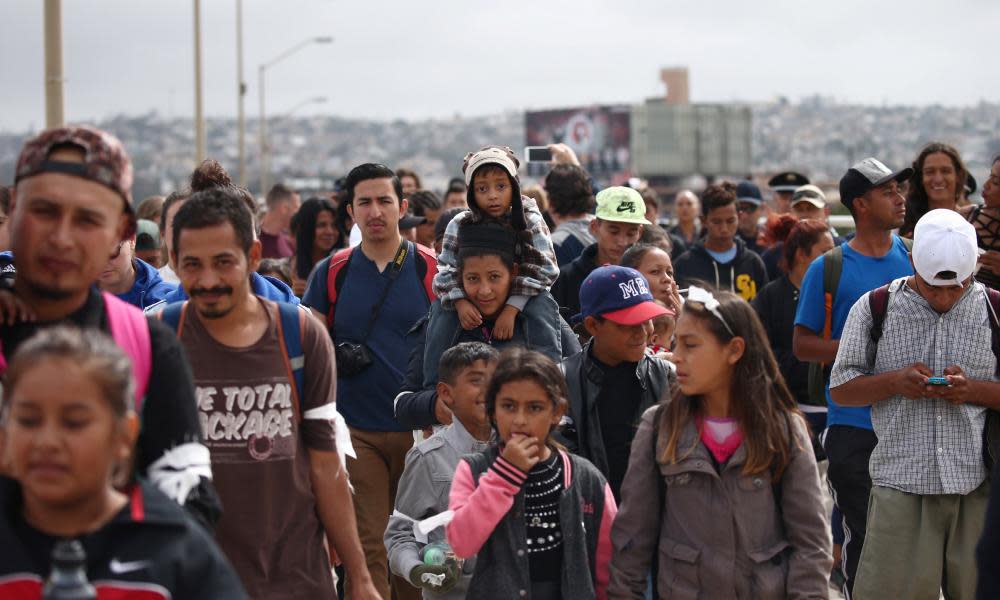Why Trump's immigration crackdown won't stem flow of Central Americans

“There are those who migrate to El Norte because of poverty. There are those who migrate to reunite with family members. And there are those … who don’t migrate. They flee,” wrote Salvadoran journalist Óscar Martínez in his 2010 book about the perilous pilgrimage that thousands of Central Americans make to the United States each year.
Eight years on, as Donald Trump wages a hardline immigration crackdown, experts and activists say the last part of that statement has never been truer.
More than 130,000 Central Americans applied for asylum last year – the majority from a trio of countries known as the ‘northern triangle’, and most of them fleeing either grinding rural poverty or the rampant gang and drug-related violence that has transformed the region into the most murderous outside of an official war zone.
“This is not people going to the US to pursue the American Dream ... These are not economic migrants. These are families that have to leave everything behind because of life or death situations,” said Sofía Martínez, a Guatemala-based Central America expert for the International Crisis Group.
Martínez said different factors were driving the northern triangle exodus.
Guatemalans, especially indigenous citizens from the country’s north, were mainly fleeing impoverishment and hunger, while most Salvadoran and Honduran migrants sought to outrun the armed violence inflicted by street gangs and security forces.
In 2016, El Salvador and Honduras ranked as two of the world’s five most deadly nations, alongside Venezuela, Syria and Afghanistan, according to the Small Arms Survey group.
Martínez said El Salvador’s murder rate had dropped since hitting a startling 2015 peak of 104 per 100,000 citizens, but the killing had spiked again in the first quarter of this year. “[The gang situation] is basically out of control in El Salvador,” she said, pointing to a recent report which claimed it was now home to some 65,000 gang members – or about 1% of the country’s entire 6.4 million population.
The bloodletting and gang violence now haunting Central America is rooted in the Cold War-era civil wars that consumed the region during the 1970s and 1980s, and the mass deportation of convicted criminals from the US the following decade.
Adriana Beltrán, an expert in Central American security issues from the Washington Office on Latin America, said that more recently misguided mano dura hardline security policies, endemic corruption and impunity had contributed to the soaring violence – as well as the migration north.

“On average 95% of homicide cases are never investigated, let alone reach a conviction across the northern triangle. It’s even worse when you are talking about gender-related violence, sexual assault or other forms of crime,” she said.
So severe were the hardships and dangers facing the northern triangle’s 32 million citizens, that experts said they doubted Trump’s “zero tolerance” policies would stem the flow of migrants heading north.
“When people are in need of safety, they are going to look for safety,” said Beltrán.
In fact, Martínez said she feared Trump’s draconian immigration policies, such as the termination of Temporary Protected Status (TPS) (which gave some 428,000 people permission to stay in the US) – coupled with continuing instability and violence in countries such as El Salvador and Honduras – would only accelerate the process.
“Unfortunately, we see it as a never-ending cycle. Trump is going to deport more people. Those people are going to flee again because of the security and economic situation in their home countries. And they are going to be right up on the US border again.”
“So what is the US government going go to? Deport them again? There needs to be some way to break the cycle.”

 Yahoo News
Yahoo News 
